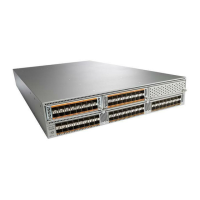1145
Cisco Nexus 5500 Series NX-OS Layer 2 Interfaces Command Reference
OL-27880-02
Chapter R Commands
remote hostname
remote hostname
To configure the hostname for the remote machine, use the remote hostname command. To revert to the
default settings, use the no form of this command.
remote hostname host-name [port port-num] [vrf {vrf-name | default | management}]
no remote hostname
Syntax Description
Command Default None
Command Modes SVS connection configuration mode
Command History
Usage Guidelines This command does not require a license.
Examples This example shows how to configure the hostname for a remote machine:
switch# configure terminal
switch(config)# svs connection SVSConn
switch(config-svs-conn)# remote hostname vcMain
switch(config-svs-conn)#
This example shows how to remove the hostname configuration for a remote machine:
switch# configure terminal
switch(config)# svs connection SVSConn
switch(config-svs-conn)# no remote hostname
switch(config-svs-conn)#
host-name Name of the remote host. The name can be a maximum of 128 characters.
port port-num (Optional) Configures the TCP port of the remote host. The port number is
from 1 to 65355.
vrf (Optional) Specifies the virtual routing and forwarding (VRF) instance to
use.
vrf-name VRF name. The name is case sensitive and can be a maximum of 32
characters.
default (Optional) Specifies the default VRF.
management (Optional) Specifies the management VRF.
Release Modification
5.2(1)N1(1) This command was introduced.

